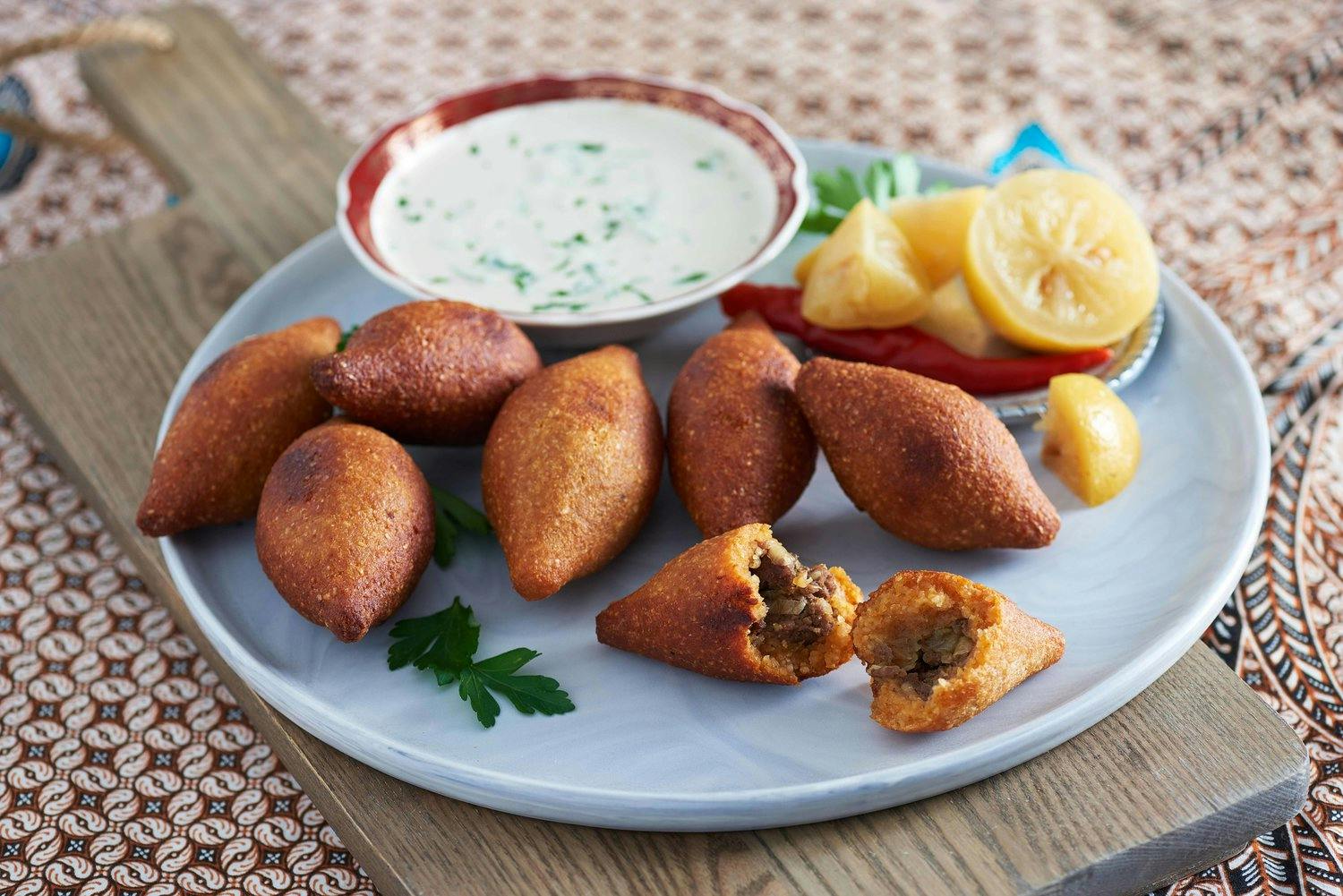Peer into Miriam Persi’s freezer and you will be greeted by zip-top bags filled with small, round Iraqi Kurdish dumplings called kubbeh. There are flat spheres filled with meat ready to be plunged into hamusta, a hearty green soup with spinach, Swiss chard, celery, onion, garlic, and enough lemon to make you pucker just the slightest. There’s the round “red kubbeh” ready to be dropped into a crimson soup of tomatoes and beets that’s served over rice. And finally, there are torpedo-shaped kubbeh, filled with beef tinged by a mix of cumin, coriander, allspice, garlic, and paprika, and wrapped in a coat of bulgur. They are destined for the frying pan where they will become crisp and brown, served alongside salads.
The tradition of kubbeh came with Miriam’s family when they immigrated to Jerusalem’s German Colony from Duhok, a city in Iraqi Kurdistan near the Turkish border. In their adopted home, the family grew their own vegetable and herb garden, milled grain, baked bread in a taboon in their yard, and raised goats in the city. (Her grandmother would wake her and her six siblings up in the morning with a spoonful of fresh goat’s milk — something Miriam thought was disgusting as a child.)
Breakfasts and lunches revolved around tahini, honey, nuts, and dates, but kubbeh was always part of the dinner rotation: Red kubbeh on Tuesdays, fried kubbeh on Fridays, and green for Pesach or special occasions.
Miriam carried the memory of recipes with her when she lived in Singapore, Za’ir, the Ivory Coast, and Iran for her husband’s engineering career. But, it was in Israel that she became known in the family for carrying on the tradition of kubbeh, particularly her grandmother’s hamusta, which take four days to make
The fried kubbeh are another signature, known in the family as kubbeh ozna’im, or ear kubbeh, a nickname given by her grandson when he was little. In place of her grandmother’s recipe, Miriam learned this recipe from her husband’s mother, a 6th generation Jerusalemite with Kurdish family roots, who showed her how to form the small torpedo shape.
Today, they are always in the freezer, ready to be fried on a special occasion (on shavuot, the meat is traded out for hard boiled eggs and onions) or when a family member requests them. Like many of the best home cooks we know, Miriam doesn’t use measuring cups or spoons in her cooking. To help ensure the recipe reaches generations to come, we captured her recipe with measurements and advice for mastering the dumpling’s classic shape.
